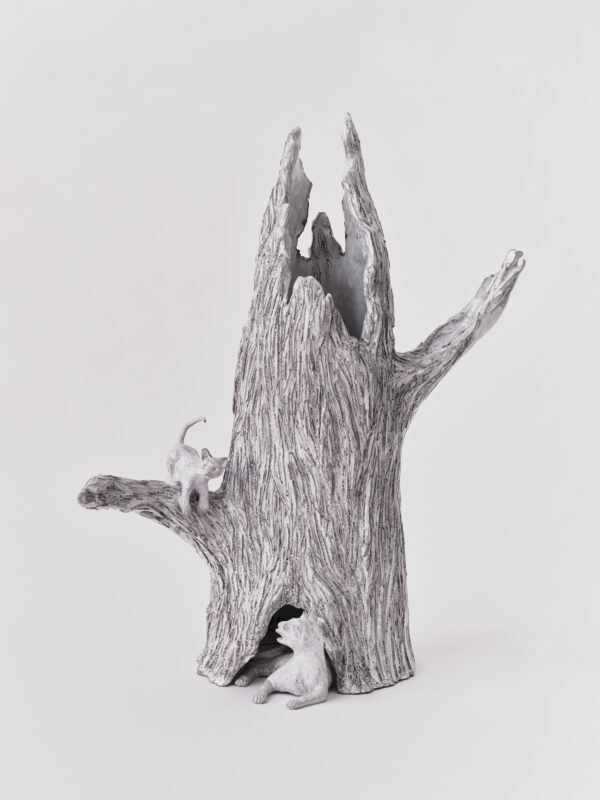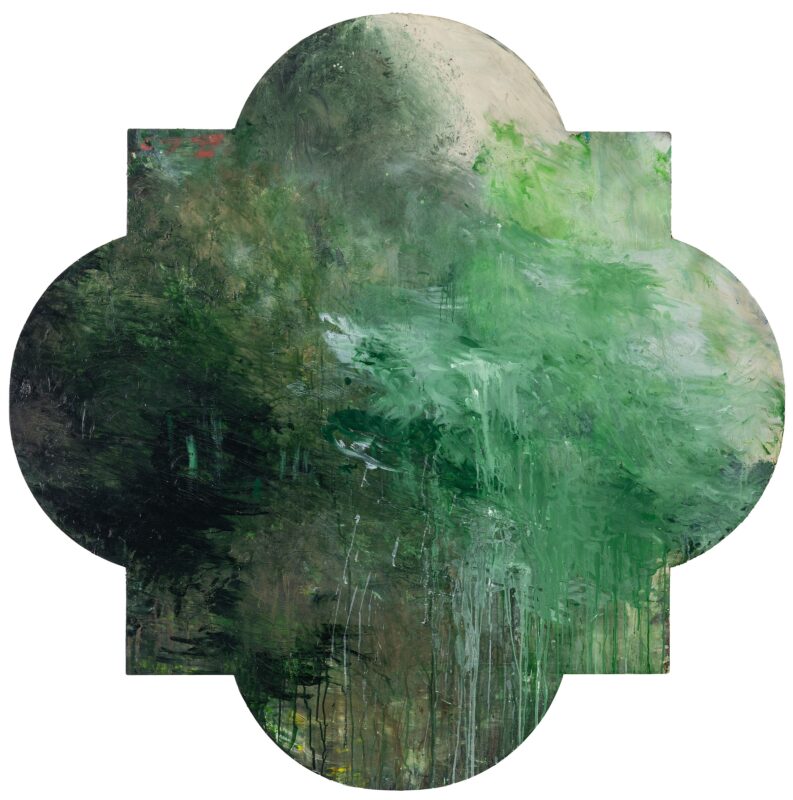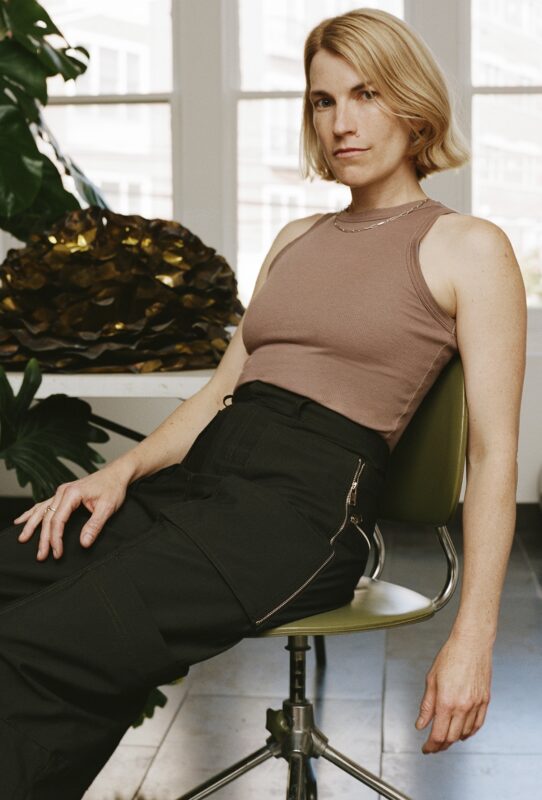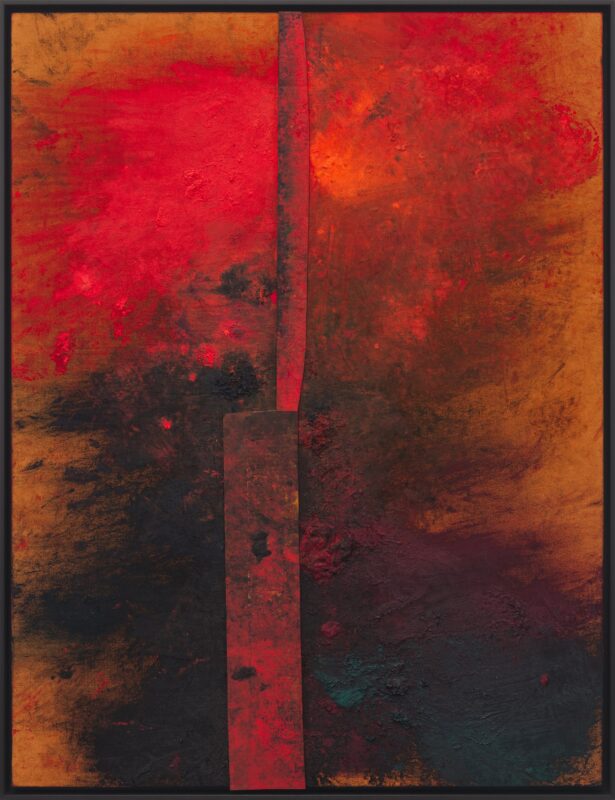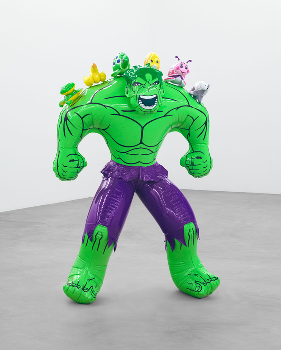
JEFF KOONS, Hulk (Friends), 2004–12, polychromed bronze, 71 1/4 x 48 1/2 x 26 inches (181 x 123.2 x 66 cm) © Jeff Koons
Hulk Elvis represents for me both Western and Eastern culture, a sense of a guardian, a protector, that at the same time is capable of bringing the house down.
—Jeff Koons
Gagosian Hong Kong is to present “Hulk Elvis,” Jeff Koons’s first major solo exhibition in Asia.
With sources as diverse as children’s art, comic book characters, and figures from classical antiquity, Koons draws a common thread through cultural history with works that attempt to touch the core of the human psyche. Working through conceptual constructs including the new, the banal, and the sublime, his art has evolved from its literal, staid beginnings in readymades to baroque creations that extol innocence, beauty, sexuality, and happiness in confounding combinations of abstraction, figuration and sumptuous effect.
Works from the ongoing series Hulk Elvis range from precision-machined bronze sculptures—inspired by an inflatable of the popular comic book hero and extruded in three dimensions—to large-scale paintings that dazzle with energy and exactitude yet mystify with complex permutations and combinations of figurative and abstract elements. The sculptures, whose polychromed surfaces mimic the gloss of vinyl inflatables, pair the Hulk superhero with incongruous props: a wheelbarrow filled with live flowers, a crew of inflatable toy animals, a precise replica of the Liberty Bell. In Hulk (Organ) (2004–14), keys, pipes, and a pedalboard jut out from the figure’s torso, legs, and shoulders; as the title suggests, the sculpture doubles as a fully-functioning instrument. For Koons, the character not only represents Western comic book culture, but also Eastern guardian gods: “They’re there as protectors, but at the same time they can become very, very violent…The Hulks are like that, they’re really high-testosterone symbols.”
In Hulk Elvis paintings, a charged mix of nudes and inflatable animals jostle against realistically rendered landscapes, magnified gestural brushwork, and underlying dot screens. Titles—Landscape (Waterfall II) (2007), Couple (Dots) Landscape (2009)—string together dominant compositional elements. The exuberance of image and texture is rendered, paradoxically, with an uncanny level of precision into a wealth of smooth, vivid detail, and images are manipulated and interwoven into volatile palimpsests of color and form. In these spectacular pictorial inventions—which reject any attempt by the eye to find a resting place—silhouettes slice through multiple layers, contours of images surface rhythmically across the field of vision, and forms loom and recede in the swirling fervor of color and line.
About The Artist
Since Jeff Koons’s first solo show in 1980, his work has been widely exhibited internationally in solo and group exhibitions. Solo exhibitions include Museo Archeologico Nazionale di Napoli (2003); Astrup Fearnley Museum of Modern Art, Oslo (2004, traveled to Helsinki City Art Museum in 2005); Museum of Contemporary Art, Chicago (2008); Metropolitan Museum of Art, New York (2008); “Jeff Koons: Versailles,” Château de Versailles, France (2008–09); Neue Nationalgalerie, Berlin; and Serpentine Gallery, London (both 2009); Fondation Beyeler, Basel (2011); and Schirn Kunsthalle and Liebieghaus Skulpturensammlung, Frankfurt (2012).
“Jeff Koons: A Retrospective” was on view at Whitney Museum of American Art, New York from June 27–October 19, 2014, and will travel to Centre Pompidou, Paris (November 26, 2014–April 27, 2015) and Guggenheim Museum Bilbao (June 5–September 27, 2015).
Koons lives and works in New York City.
